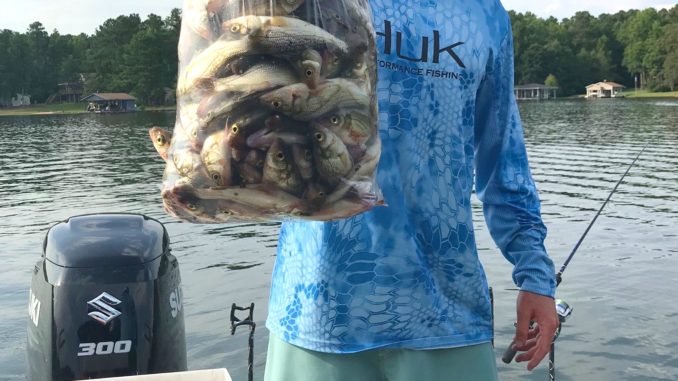
Fishing for food or bait? White perch are one fish that fills the bill in both instances across the Carolinas. Here’s how to fill your bait tank and fish fryer.
For those of you who are live-bait fisherman, have you ever been so proud of the job you did catching, storing and presenting the bait that you thought, “That looks so good, I’d eat it myself?”
That’s not exactly the way it went down for Zakk Royce of Blues Brothers Guide Service, but he got there in the end.
Royce is a famous catfish guide. How else do you describe a guy who pulled back-to-back North Carolina-record blue catfish from Lake Gaston, and several 100-pound fish.
Royce has spent a lot of time learning the behavior of trophy blue catfish on Gaston, a 20,000-acres lake on the Roanoke River along the North Carolina-Virginia border, and one of those behaviors is eating white perch. Accordingly, Royce spends a lot of guide prep time catching white perch for bait. In fact, he frequently catches them by the cooler-full in between his catfish guide trips.
“Big blue catfish love to eat white perch, but one of the things I hear most often from other anglers is why am I not keeping those to eat myself,” said Royce (919-724-2474). “A couple of years ago, I was catching some really good sized perch — pound-and-a-half fish — so I broke down and filleted them and cooked them. Those guys were right; they’re delicious. I eat a lot of crappie that I catch here on Gaston in the spring, and these fish are every bit as good if not better than crappie.”
While catching scads of white perch year round is not a difficult task, Royce said late August and into September is one of the better times to catch bigger perch. He said the typical perch pattern through the year is to find them congregating on long points and humps in typical schooling-fish fashion, but as the water cools, they move.
“I look for them in the backs of creeks in 10 to15 feet of water when the weather starts to cool off a little at night,” he said. “Not all creeks are as good as others; I find the ones with sandy bottoms are best.”
The most likely reason for the seasonal move is the number of young-of-the-year shad that emerge from cover and can be found scattered all over the upper part of the water column in September. Because the bait and predators eating them are so shallow, it’s nearly impossible to mark fish on the graph. Royce said if he’s perch fishing on a calm day, he can often see the perch schooling on baitfish, along with other predators. Since the perch are not stationary, he’s developed a trolling tactic to catch them.
“I troll crankbaits for them,” said Royce. “I’ve heard some of the crappie guys around the country do the same thing, and I use the same 200 series and 300 series (Bandit) crankbaits they use.”
Royce also discovered a way to separate perch into two piles, the fish under a pound that he uses for catfish bait and the fish over a pound that he keeps for himself.
“I run a three-way swivel from the 8- to 10-pound main line that goes to my rod and tie two 2- to 3-foot leaders off of it using 20 pound mono,” he said. “On the shorter leader, I tie the crankbait, and the longer one gets a Beetle Spin or something with a small blade.”
Royce uses the crankbait as a depth planer; the 200 series bait will run to about 10 feet, and the 300 will run deeper. The lighter jig runs above the crankbait and tends to collect the smaller perch, while usually, only biggest perch will hit the crankbait.
“That’s not a hard-and-fast rule,” he said. “I’ve caught two smaller perch on the same crankbait.”
Royce uses the 36-volt, 112-pound thrust trolling motor on his boat to troll the rigs, one on either side of the boat. The optimal trolling speed is from 2.0 to 2.5 mph. He has tried to run more rods but said when he’s in the perch, two rods is about all he can handle. He’ll bring the perch over the side four at a time, then turn around and run right back through the same area until he gets his fill.
“I run the lines way back, like 100 feet behind the boat, so it takes a little bit of maneuvering to get turned around, but if the perch are in the area — along with catfish, bass and crappie — I’m usually catching fish all through the run,” he said.
Royce also recommends changing crankbait colors frequently until you find what they like. Somedays, the bright chartreuse and pinks work while the natural colors won’t and vice versa. He can’t explain why. He just changes colors until the fish decide. As far as the jig/spin color, he said it’s hard to beat white.

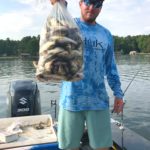
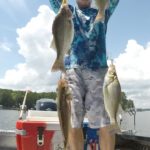
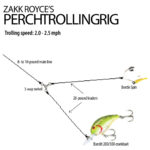
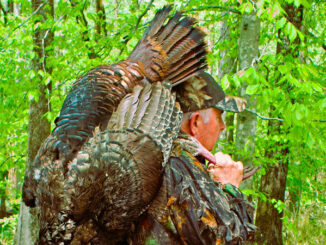
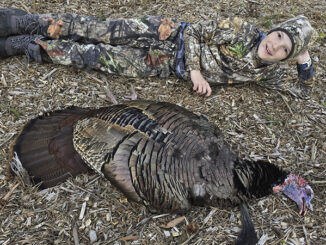
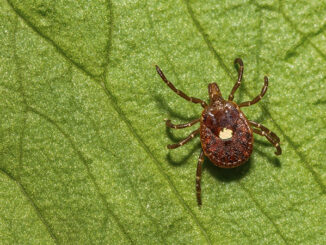

Be the first to comment